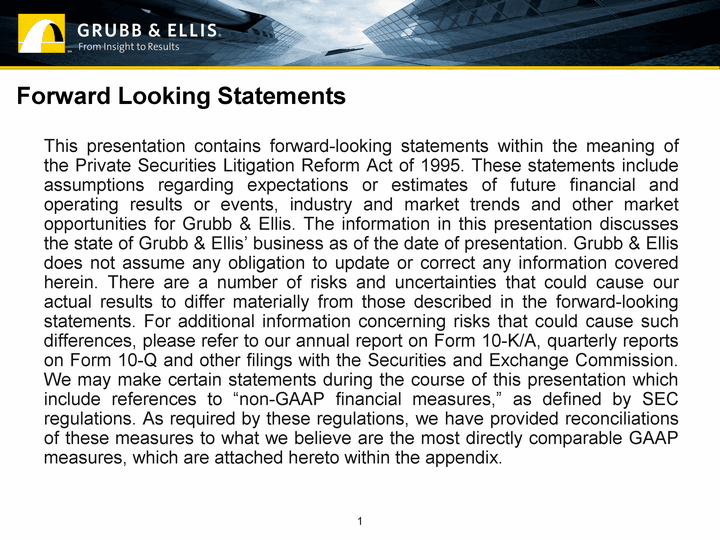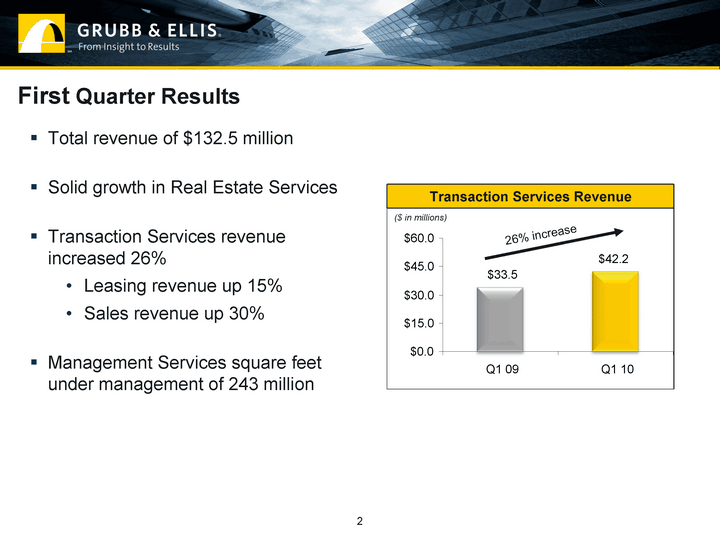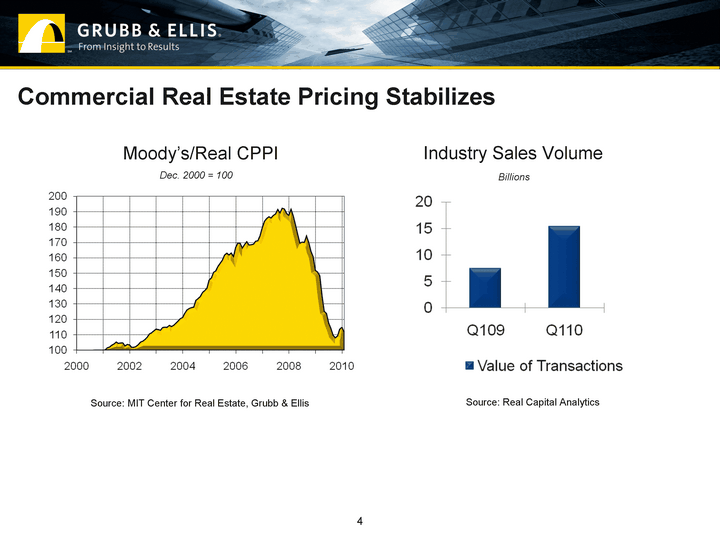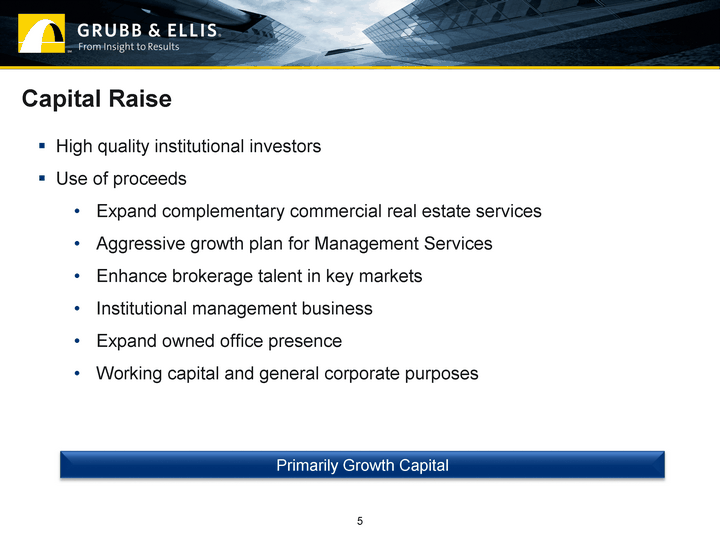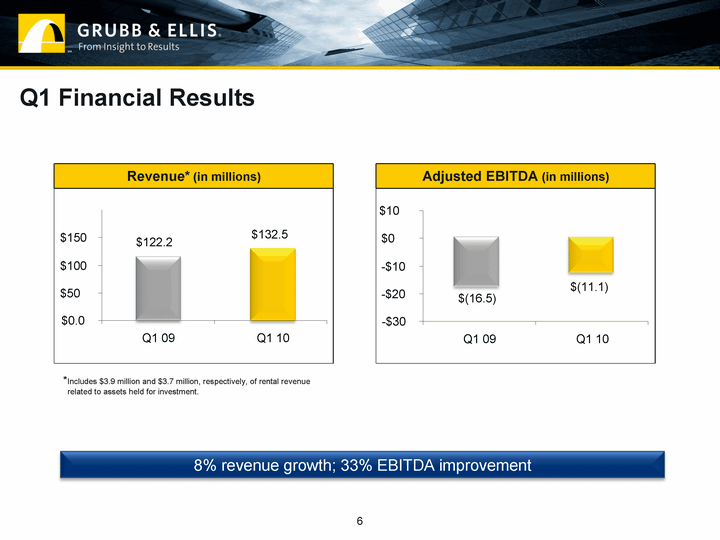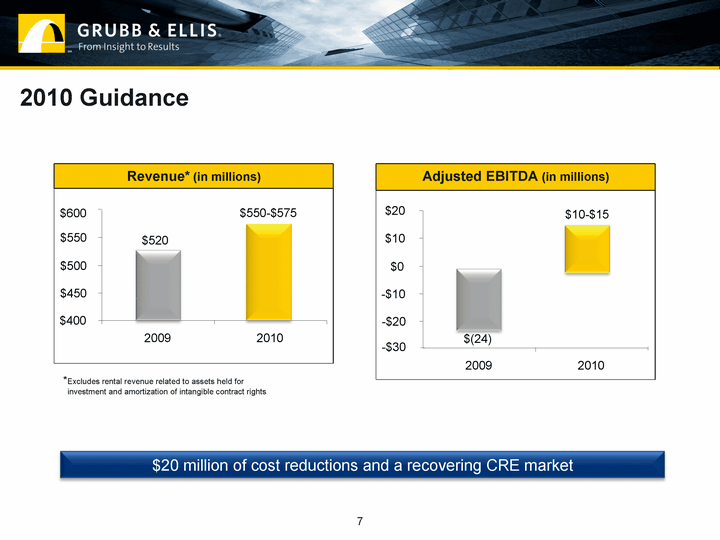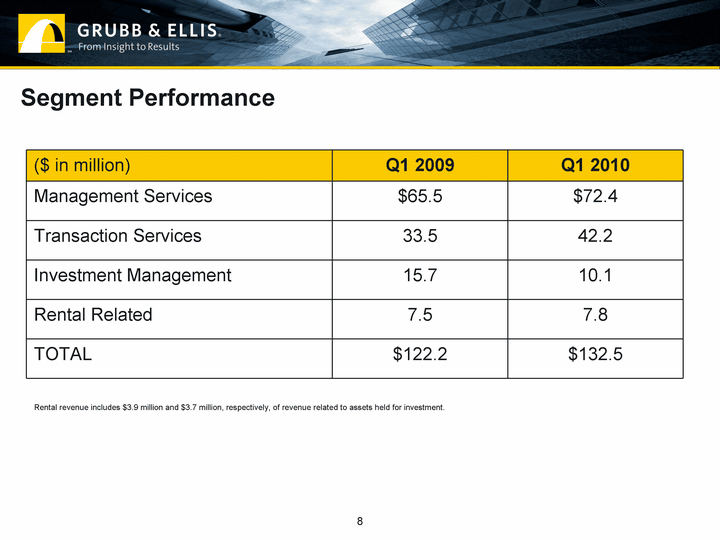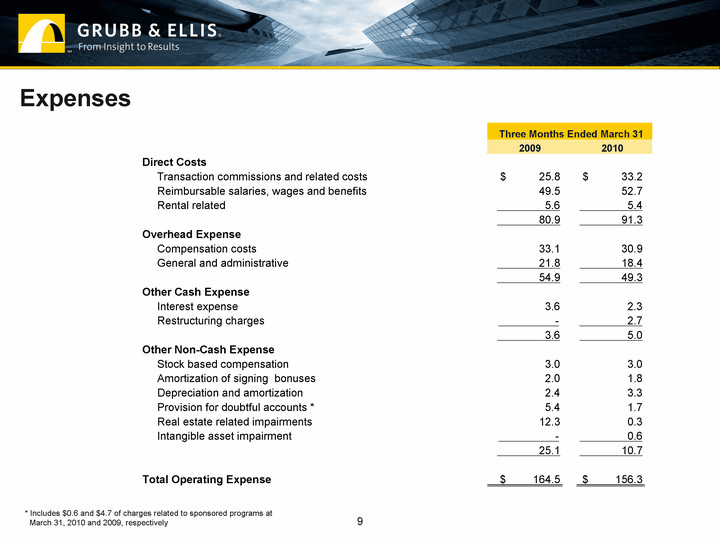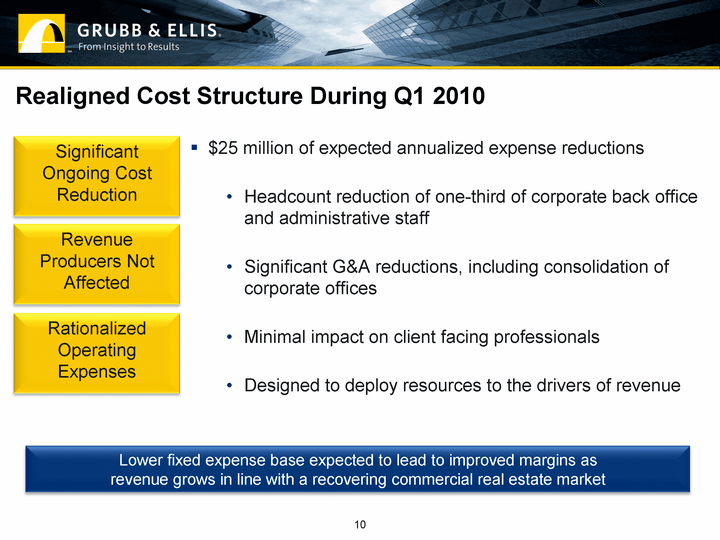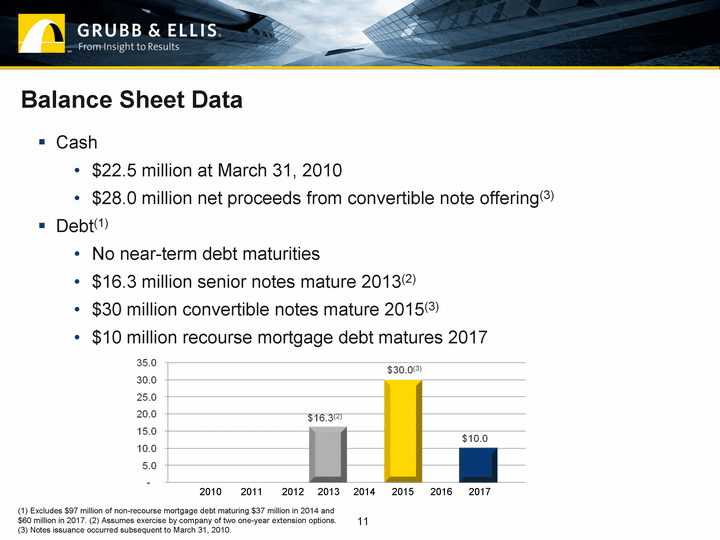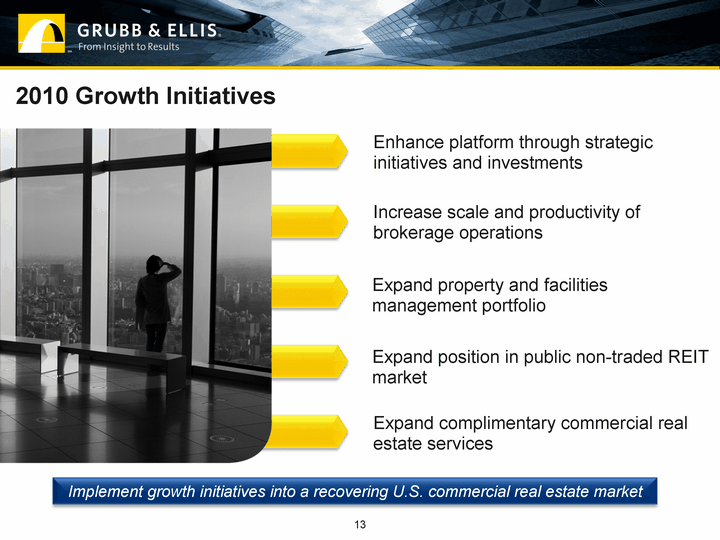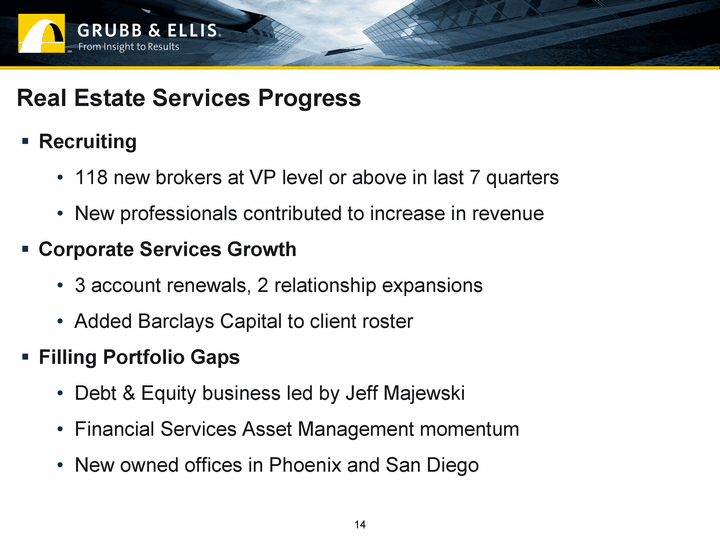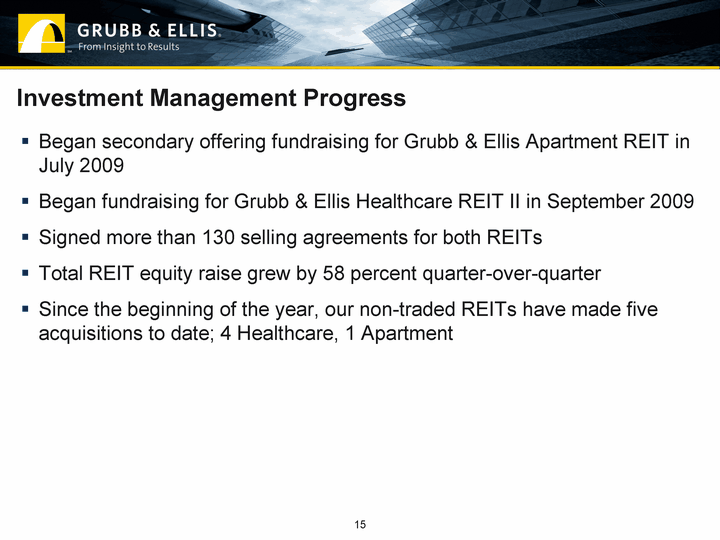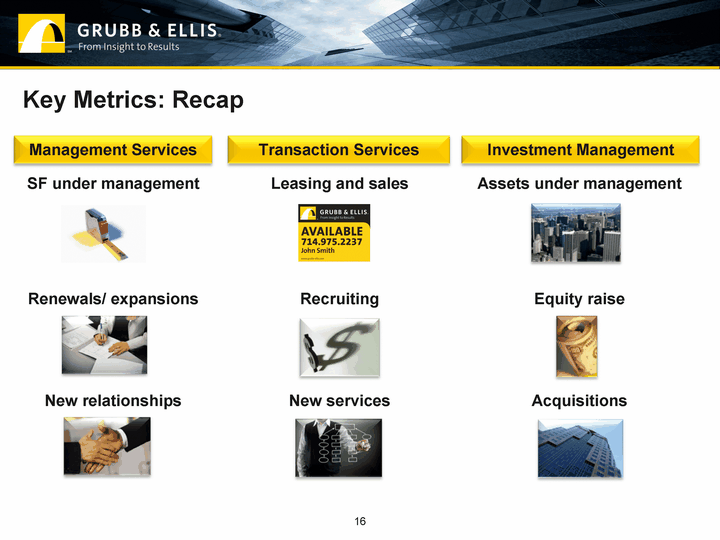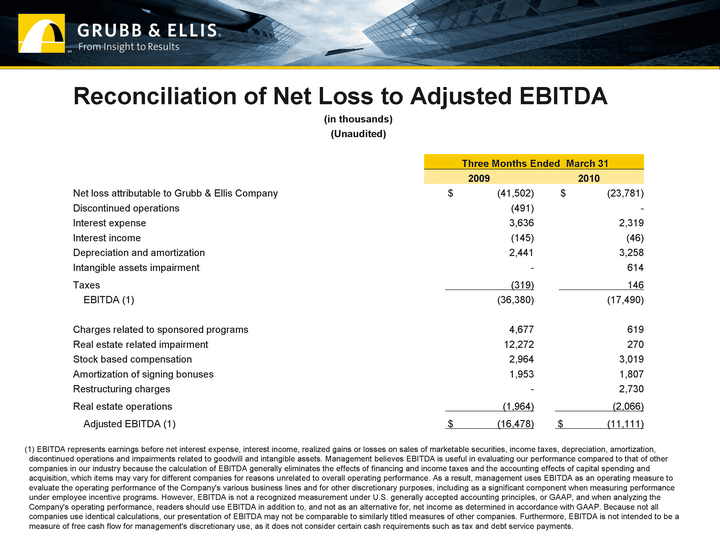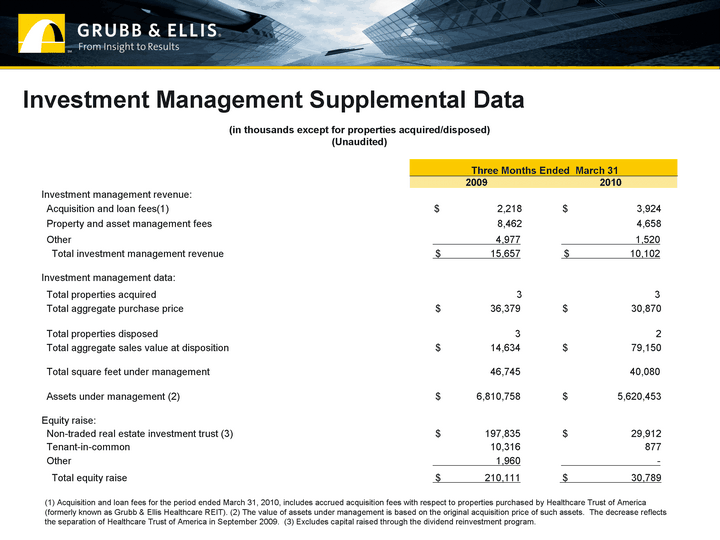| Reconciliation of Net Loss to Adjusted EBITDA Reconciliation of Net Loss to Adjusted EBITDA Reconciliation of Net Loss to Adjusted EBITDA (in thousands) (in thousands) (in thousands) (Unaudited) (Unaudited) (Unaudited) Three Months Ended March 31 Three Months Ended March 31 2009 2010 Net loss attributable to Grubb & Ellis Company $ (41,502) $ (23,781) Discontinued operations (491) - Interest expense 3,636 2,319 Interest income (145) (46) Depreciation and amortization 2,441 3,258 Intangible assets impairment - 614 Taxes (319) 146 EBITDA (1) (36,380) (17,490) Charges related to sponsored programs 4,677 619 Real estate related impairment 12,272 270 Stock based compensation 2,964 3,019 Amortization of signing bonuses 1,953 1,807 Restructuring charges - 2,730 Real estate operations (1,964) (2,066) Adjusted EBITDA (1) $ (16,478) $ (11,111) (1) EBITDA represents earnings before net interest expense, interest income, realized gains or losses on sales of marketable securities, income taxes, depreciation, amortization, discontinued operations and impairments related to goodwill and intangible assets. Management believes EBITDA is useful in evaluating our performance compared to that of other companies in our industry because the calculation of EBITDA generally eliminates the effects of financing and income taxes and the accounting effects of capital spending and acquisition, which items may vary for different companies for reasons unrelated to overall operating performance. As a result, management uses EBITDA as an operating measure to evaluate the operating performance of the Company's various business lines and for other discretionary purposes, including as a significant component when measuring performance under employee incentive programs. However, EBITDA is not a recognized measurement under U.S. generally accepted accounting principles, or GAAP, and when analyzing the Company's operating performance, readers should use EBITDA in addition to, and not as an alternative for, net income as determined in accordance with GAAP. Because not all companies use identical calculations, our presentation of EBITDA may not be comparable to similarly titled measures of other companies. Furthermore, EBITDA is not intended to be a measure of free cash flow for management's discretionary use, as it does not consider certain cash requirements such as tax and debt service payments. |

